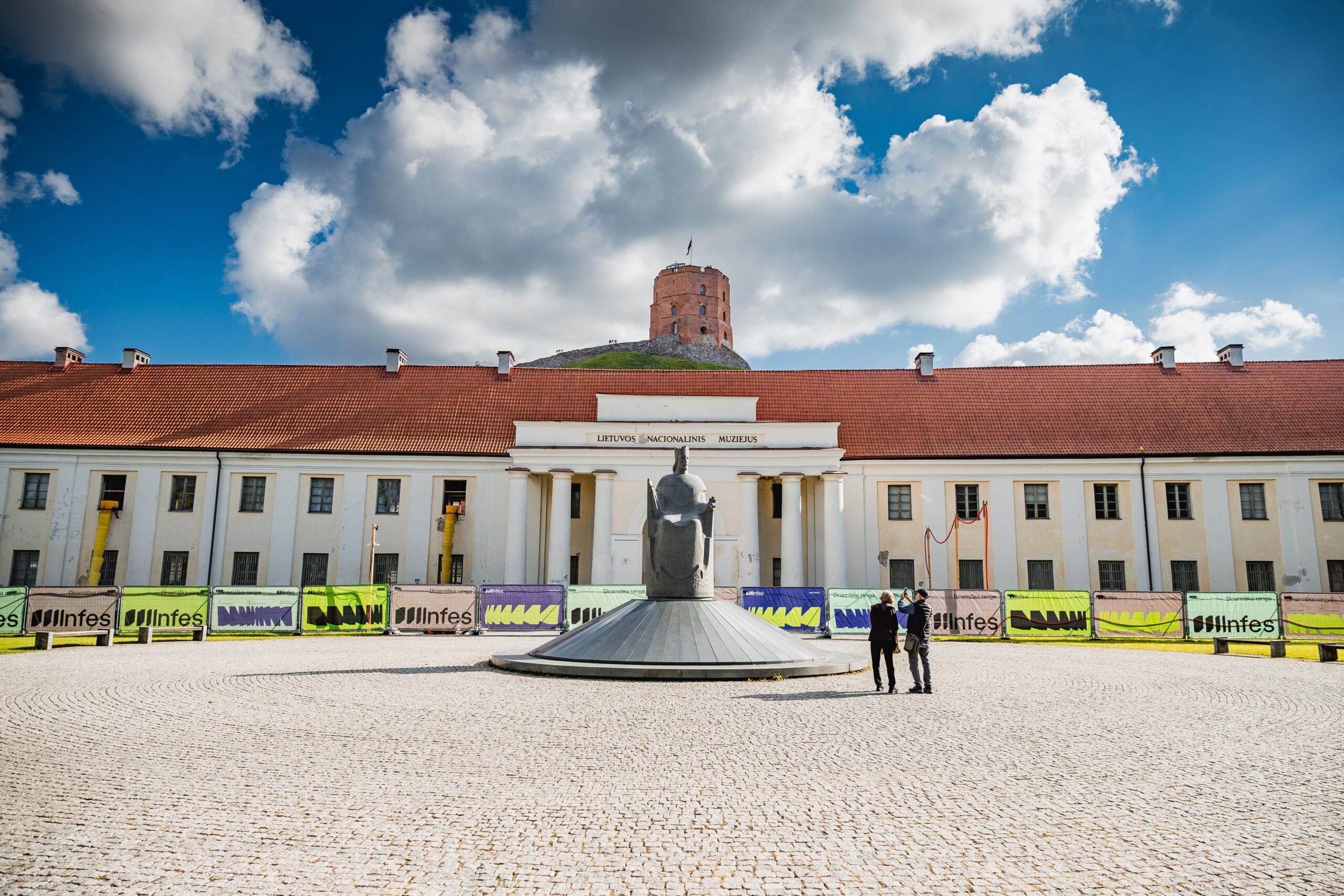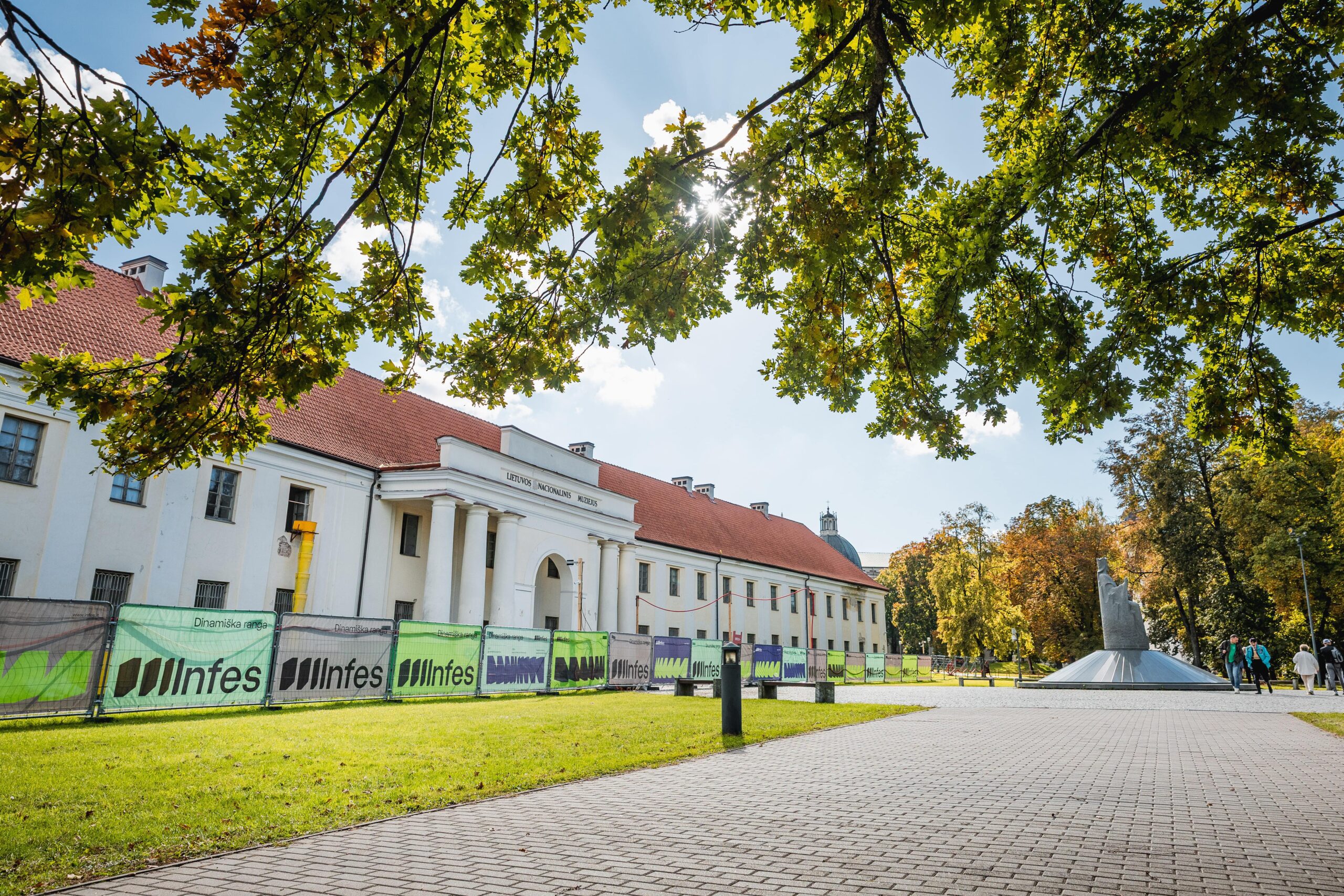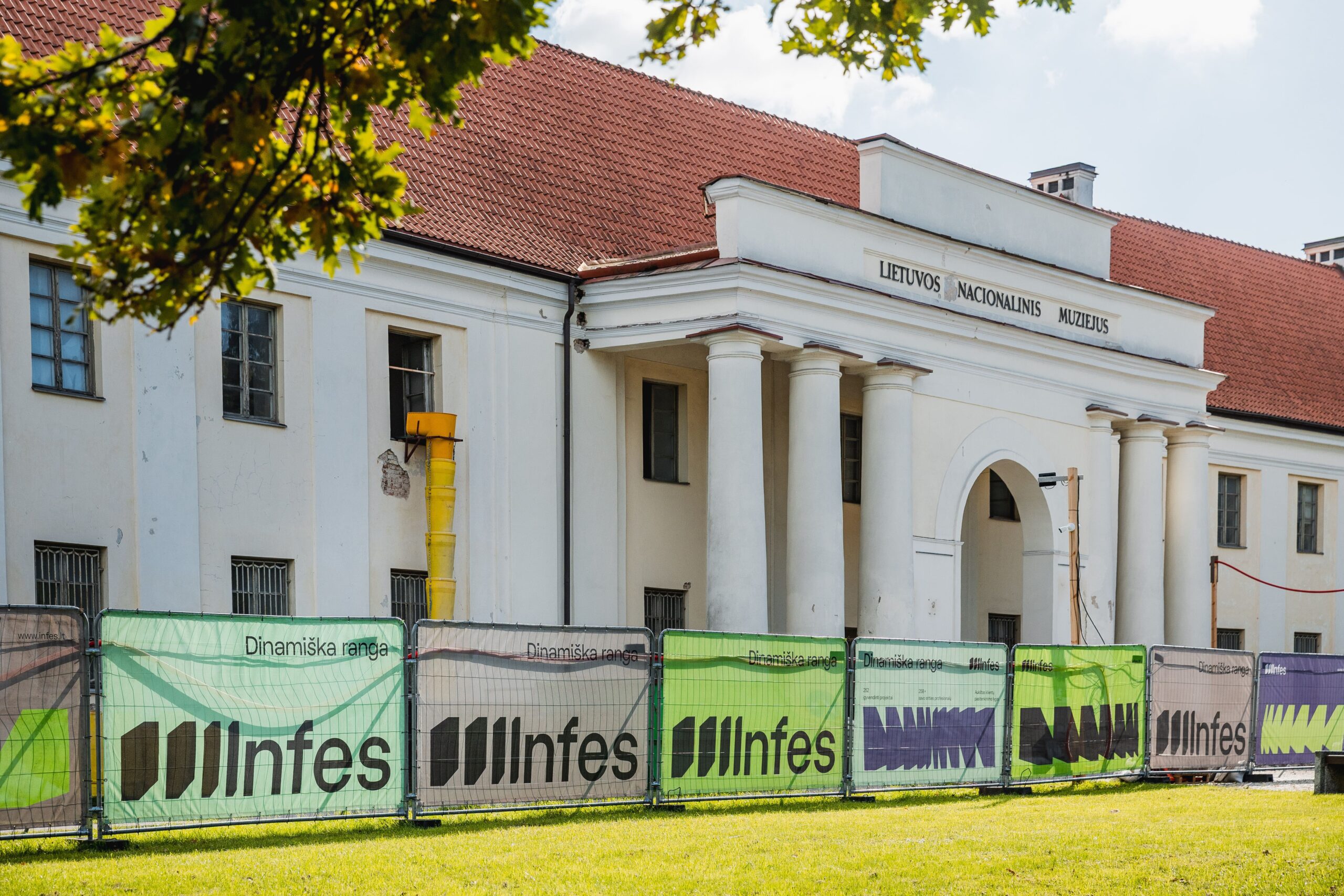
About the client
The National Museum of Lithuania is one of the first public museums in the country. The museum has twelve divisions, which hold over 1.5 million exhibits. Different divisions allow visitors to learn about various stages of Lithuanian history. The museum’s mission is to collect, preserve, restore, and popularize archeological, ethnic, and historical assets of national significance, as well as promote cultural identity and develop the national historical consciousness.
The New Arsenal is a division of the National Museum of Lithuania and one of the oldest buildings of Vilnius’ castle complex. Opened in 1968, the museum invites visitors to learn about different stages of Lithuanian history, aspects of social life, and the development of Lithuanian ethnic culture.
Infes work
The reconstruction of the cultural building will be executed in stages. Preparatory work is being done first, while the reconstruction of the facade and the roof will begin later. The facades will be restored by preserving their valuable features and additionally exposing the building’s multiple layers.
The building will be opened vertically — segments of the reinforced concrete floor between the supporting beams that are currently above the central part of the lobby will be deconstructed, and glass composite panels will be installed instead. Beams and monolithic beam floors installed in 1964, which are still in good condition, will be preserved. The roof will feature a skylight to allow light from the west to illuminate the lobby.
The museum will feature multipurpose exhibition halls, multifunctional spaces for educational activities and conferences, administrative rooms, an elevator, and technical premises to ensure a suitable climate for receiving and storing exhibits. A new basement will be designed to expand the current size of the building. A cafe with an outside terrace is planned on the first floor.
Results
Once the scheduled work is complete, the New Arsenal will be ready for exhibitions, educational and cultural services that meet the expectations of museum professionals, curators, and visitors. The most valuable elements of the current building and its surroundings will be preserved, at the same time revealing the versatility of the building’s history.
The museum’s visitors will be invited to enjoy functionally located exhibition spaces and relax at the café. The building will also be accessible to visitors with disabilities. Designated parking spots for bicycles and scooters will make the museum more attractive to visitors arriving by various modes of transport.



